A cross-stitch carpet worked in the style of 16th century carpets, for use by the SCA Kingdom of Lochac.
This was my first distributed embroidery project for the Worshipful Company of Broderers of Lochac, completed for the first Royal Investiture of the new Kingdom.
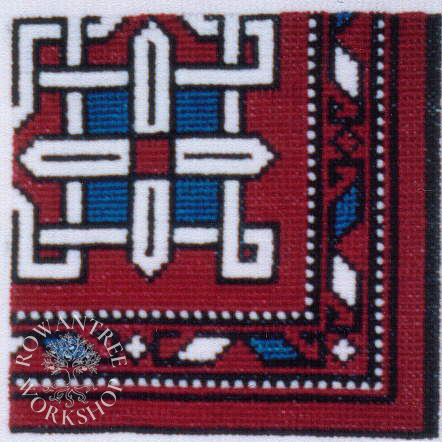
Although I completed the research, design and kits, this project was the work of many hands!
Research and Design
Islamic carpets are probably the most familiar works of Islamic art to western Europeans and Americans. Hand-knotted carpets have always been prized in Islamic cultures. The craft goes back to the traditions of nomads, who used carpets because they were portable, practical and a way of displaying wealth.
Turkish rugs and carpets were the first Oriental rugs imported into Europe. In 1271, the famous adventurer Marco Polo wrote upon his travels through Turkey that “the best and handsomest carpets in the world are wrought here”.
Because Turkish carpets were rare and expensive, it was not long before ‘knock-offs’ were being made in Europe to satisfy the local market for a fraction of the price. These were not knotted, as true Turkish carpets are, but embroidered in wool on a canvas background, often using cross-stitch to imitate the raised pile.
Evidence of their esteem can be seen in paintings by such European masters as Giotto (1267-1337), Hans Holbein the Younger (1478-1543), and Lorenzo Lotto (1480-1556). Carpets are often shown draped over tables and placed at the feet of royalty.
My carpet design is based on these three paintings by Holbein:
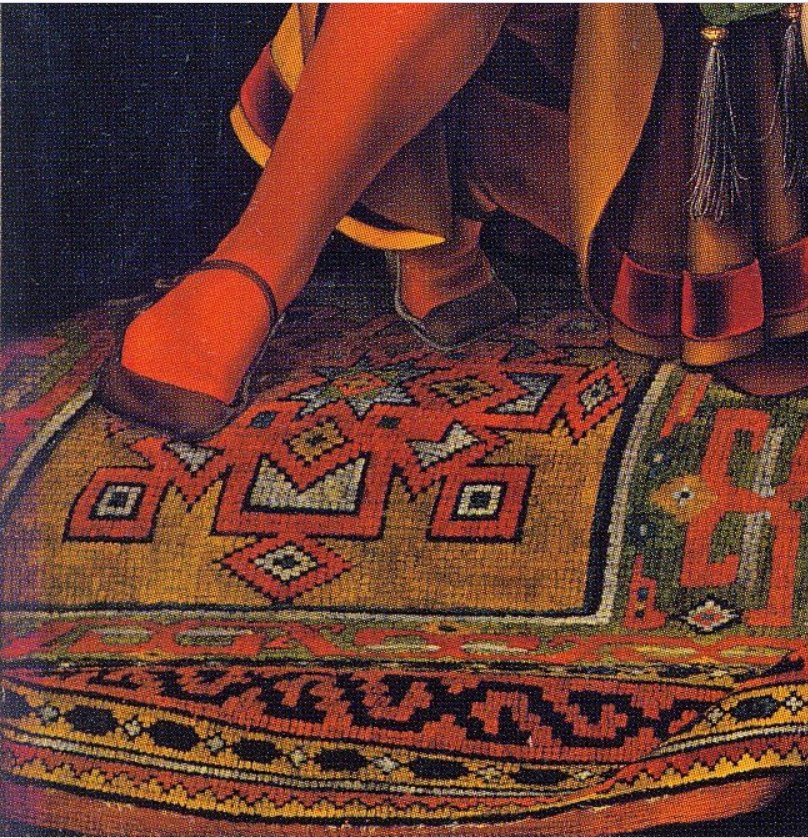
Source: Wikipedia

Source: Wikipedia
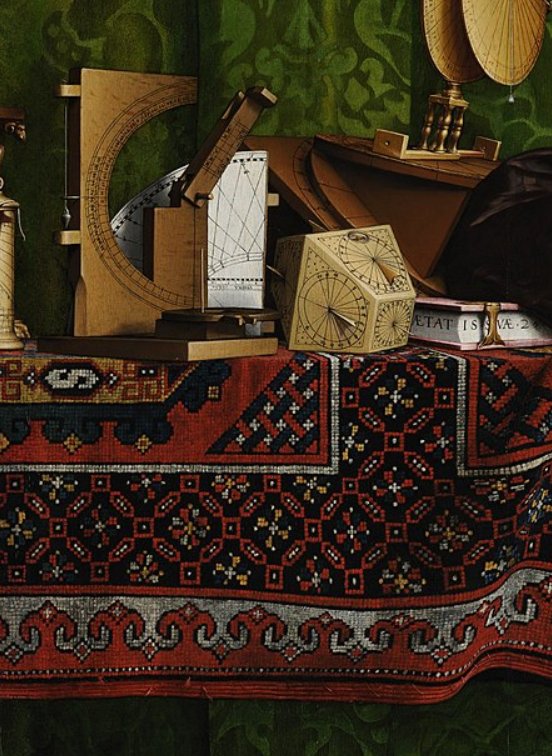
Source: Wikipedia
The centre of Turkish carpets was typically filled with geometrical figures such as starbursts, octagons, lozenges and medallions.
I looked for design elements that would reflect the device of the Kingdom – stars and crosses.The border design of interlaced crosses can be seen in several of Holbein’s works, including the Portrait of the Merchant Georg Gisze, whilst the cross-hatch background is from ‘The Ambassadors‘. The starbursts on my carpet design are adapted from ‘The Darmstadt Madonna‘ (see images above).
I worked with the Lochac colour palette of red, blue and white, and integrated all these elements into a final design, in keeping with the 16th century examples.
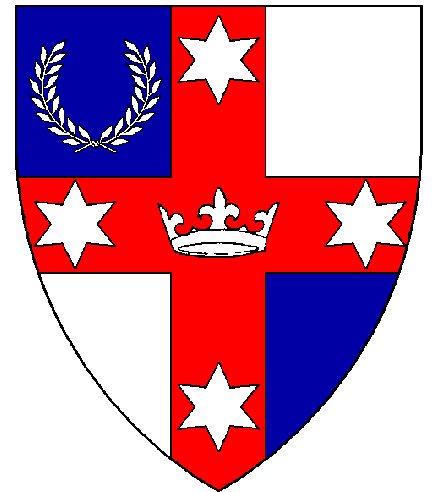
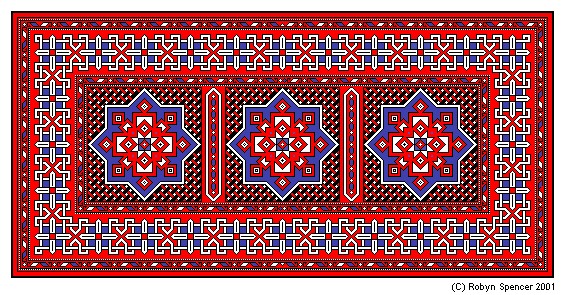
Construction
Since this was to be a group project, it had to be worked in sections. I cut up the design to create 31 pieces and created a stitching chart for each piece. I used the stitch count information to create a spreadsheet for each piece, so I could calculate how much wool of each colour was needed for the project, and for each piece. (There are commercial programs that do this automatically, but I didn’t have one).
Commercial tapestry wool is expensive, but bulk knitting wool proved a practical alternative. The yarn from Bendigo Woollen Mills was perfect, having both a Z and S twist, so it will not unravel as most knitting wools would, and it comes in massive 200g balls.
I created kits for each section, containing:
- Background information, including picture of final design and working instructions
- Charted pattern for the relevant section, in full colour
- 7 count canvas piece (allowing border for joining)
- Pre-cut 1m wool lengths as required to complete section (with some spares).
As the completed pieces were returned, a small team sewed them together, overlapping the sections and filling in the ‘missing’ rows to complete the pattern.
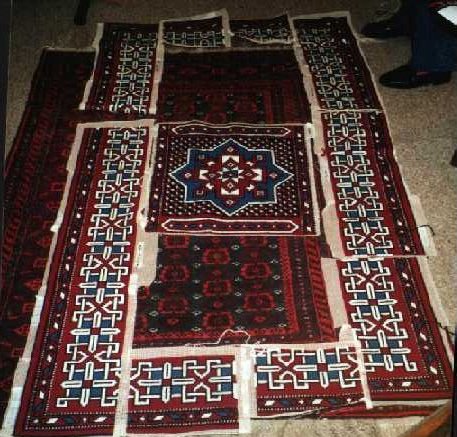
I finished the edge on the long sides by turning back the canvas and working a carpet bindstitch (a variation on long-armed cross-stitch). In the short ends, I turned back the edge and attached a fringe using larks head knots. Finally, I backed the carpet with heavy felted material, to provide support and extra padding. The finished carpet is roughly 1 x 2 meters.

Afterthoughts
The carpet provided a project for many people at a low level of embroidery skill, allowing them to take participate in making something special.
There were some problems with the canvas fraying more than expected during the work, making it difficult sew the pieces together. The solution is to use Fray-check on all the edges before handing out the pieces and again when they come back in. You can read more about this project on the WCoB website.

